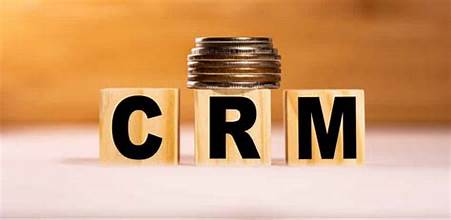Embark on a journey through the intricacies of CRM pricing, exploring its various facets and implications. Dive into the world of customer relationship management costs with a mix of informative insights and engaging discourse.
Unravel the complexities surrounding CRM pricing, shedding light on the key factors that shape this crucial aspect of business operations.
Overview of CRM Pricing
CRM pricing refers to the various costs associated with implementing and using Customer Relationship Management (CRM) software. This includes not only the initial purchase price of the software but also ongoing fees for support, maintenance, and upgrades.
Key Components of CRM Pricing
- Licensing Costs: Many CRM software solutions offer different tiers of licensing, with each tier providing access to different features and functionalities. The cost of the license often depends on the number of users and the level of access required.
- Implementation Costs: This includes the expenses associated with customizing the CRM software to suit the specific needs of the business, as well as training employees on how to use the system effectively.
- Support and Maintenance Costs: Ongoing support and maintenance fees are typically charged by CRM vendors to ensure that the software remains up-to-date and functions smoothly.
Examples of CRM Pricing Models
- Per User Pricing: In this model, the cost of the CRM software is based on the number of users who will be using the system. This can be a cost-effective option for small businesses with a limited number of employees.
- Subscription-Based Pricing: Many CRM vendors offer subscription-based pricing models, where customers pay a monthly or annual fee to use the software. This can be a flexible option for businesses that want to scale their CRM usage up or down as needed.
- Custom Pricing: Some CRM vendors offer custom pricing plans that are tailored to the specific needs and budget of the business. This can be a good option for larger organizations with complex CRM requirements.
Factors Influencing CRM Pricing
When it comes to the cost of CRM software, several factors come into play that influence pricing. Understanding these factors is crucial for businesses looking to invest in CRM solutions.
Features and Functionalities
The features and functionalities offered by a CRM software directly impact its pricing. More advanced features such as automation, customization, analytics, and integration capabilities often come at a higher cost. Businesses need to assess their requirements and choose a CRM solution that offers the right balance of features without unnecessary extras that drive up the price.
Scalability
Scalability plays a crucial role in determining CRM pricing. A scalable CRM solution can grow with the business, accommodating an increasing volume of data, users, and processes. However, this scalability often comes at a higher price point. Businesses need to evaluate their current needs and future growth projections to determine the level of scalability required in a CRM solution that aligns with their budget.
Common Pricing Models in CRM
When it comes to CRM pricing, there are several common models that companies often use. Let's take a closer look at these different approaches to pricing in the CRM industry.
Subscription-based Pricing vs. One-time Licensing Fees
Subscription-based pricing and one-time licensing fees are two popular pricing models in the CRM industry. Here's how they compare and contrast:
- Subscription-based Pricing:
- Customers pay a recurring fee at regular intervals (monthly, quarterly, annually).
- Provides continuous access to the CRM software and updates.
- Lower upfront costs but higher long-term expenses.
- One-time Licensing Fees:
- Customers pay a one-time fee to purchase the CRM software outright.
- Provides perpetual access to the software but may require additional fees for updates or support.
- Higher upfront costs but lower long-term expenses.
Usage-based Pricing vs. Tiered Pricing Structures
Usage-based pricing and tiered pricing structures are two other common models in CRM pricing. Here are the key differences between them:
- Usage-based Pricing:
- Customers are charged based on the actual usage of the CRM software (number of users, data storage, features used).
- Offers flexibility for businesses with fluctuating needs.
- Costs can vary month to month based on usage.
- Tiered Pricing Structures:
- Customers choose from pre-defined tiers/packages with set features and limits.
- Provides clarity on pricing and feature offerings
.
- May lead to overpaying for unused features or restrictions on growth.
Advantages and Disadvantages of Each Pricing Model
Each pricing model has its own set of advantages and disadvantages in the CRM industry:
- Subscription-based Pricing:
- Advantages:Lower upfront costs, predictable budgeting, continuous updates and support.
- Disadvantages:Higher long-term expenses, potential dependency on the vendor.
- One-time Licensing Fees:
- Advantages:Ownership of software, lower long-term expenses, no vendor dependency.
- Disadvantages:Higher upfront costs, additional fees for updates/support, risk of software obsolescence.
- Usage-based Pricing:
- Advantages:Pay for what you use, flexibility, scalability.
- Disadvantages:Costs can vary, potential for unexpected charges, complexity in tracking usage.
- Tiered Pricing Structures:
- Advantages:Clarity on pricing, defined feature sets, scalability within tiers.
- Disadvantages:Overpaying for unused features, restrictions on customization, potential limitations on growth.
Hidden Costs in CRM Pricing
When considering CRM pricing, it's important to be aware of potential hidden costs that can impact the overall implementation budget. These costs often stem from customization, integration, and training needs that may not be initially apparent.
Customization Costs
Customizing a CRM system to align with specific business processes or requirements can incur additional costs. This may involve modifying the system's interface, creating new fields, or developing custom reports to meet unique needs.
Integration Costs
Integrating a CRM system with existing software applications, such as accounting or marketing tools, can result in hidden costs. Compatibility issues, data migration, and API development are common factors that contribute to integration expenses.
Training Costs
Training employees to effectively use a new CRM system is essential for successful implementation. Costs associated with training programs, materials, and ongoing support should be considered to ensure users can maximize the system's benefits.
Tips to Uncover and Manage Hidden Costs
- Request detailed pricing quotes from CRM vendors that include all potential customization, integration, and training costs.
- Consult with IT professionals or CRM experts to identify any hidden costs that may arise during implementation.
- Allocate a contingency budget for unforeseen expenses that may emerge as the CRM system is implemented and utilized.
- Regularly review and monitor expenses to ensure that hidden costs are identified and managed effectively throughout the CRM implementation process.
Negotiating CRM Pricing
When it comes to negotiating CRM pricing with vendors, there are several strategies that can help you secure a better deal. Understanding pricing structures and contract terms is crucial in this process, as it allows you to leverage your knowledge to negotiate effectively.
Importance of Understanding Pricing Structures and Contract Terms
Before entering into negotiations with CRM vendors, it is essential to have a clear understanding of their pricing structures and contract terms. This knowledge will enable you to identify areas where you can potentially negotiate better terms or discounts.
- Study the pricing models: Familiarize yourself with the different pricing models offered by CRM vendors, such as per user/per month, tiered pricing, or pay-as-you-go. Understanding these models will help you determine which one best suits your needs and budget.
- Review contract terms: Pay close attention to the contract terms, including renewal clauses, cancellation fees, and potential hidden costs. Knowing these details will give you leverage during negotiations.
- Identify negotiation points: Look for areas where you can negotiate, such as volume discounts for multiple users, extended payment terms, or additional features at no extra cost. Having a clear list of negotiation points will help you make a compelling case to the vendor.
When and How to Negotiate Discounts or Additional Features
Timing is crucial when negotiating CRM pricing. It is often best to negotiate discounts or additional features at the end of a quarter or fiscal year when vendors are more likely to offer concessions to meet their sales targets.
Be prepared to walk away if the vendor is unwilling to negotiate on price. Remember that you have the power to choose the vendor that best meets your needs and budget.
Final Wrap-Up
In conclusion, CRM pricing is a multifaceted realm that demands careful consideration and strategic planning. By understanding the nuances of pricing models and hidden costs, businesses can navigate this landscape with confidence and efficiency.
Helpful Answers
What are the common pricing models in CRM?
Common pricing models in CRM include subscription-based pricing, one-time licensing fees, usage-based pricing, and tiered pricing structures.
How do features and functionalities impact CRM pricing?
Features and functionalities can influence CRM pricing by adding complexity and value to the software, thus affecting the overall cost.
What are some hidden costs in CRM pricing?
Hidden costs in CRM pricing may arise from customization, integration, and training expenses that are not always explicitly stated in the initial pricing.






